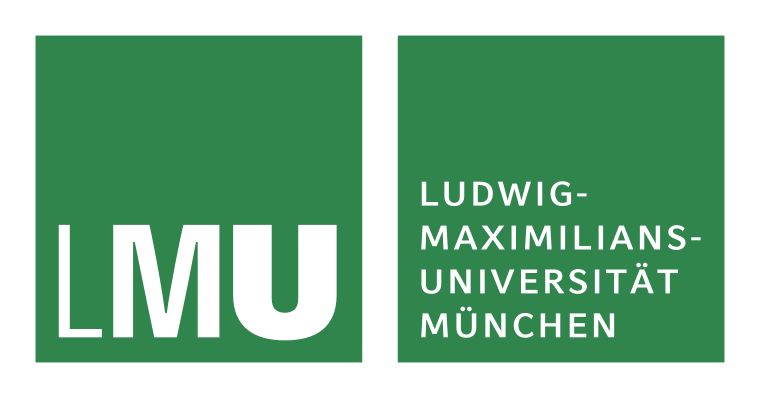News
Our eight-helix bundle paper was selected as "pick of the week" by Chem. Sci. editors and the object of a highlight in Chemistry World
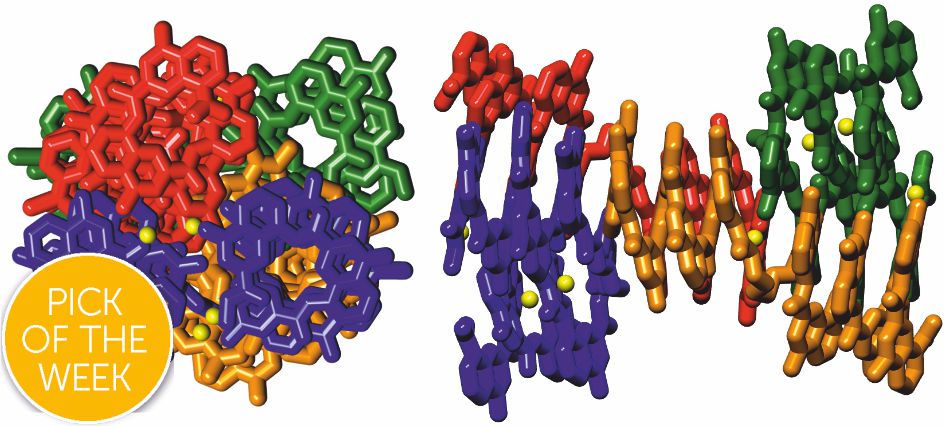
Want to know where the field of foldamers is going? Check this feature article in Chemistry World!

As the shape determines the function, chemists have designed and synthesized aliphatic and aromatic foldamers able to mimic protein-protein interactions, catalyze chemical reactions or encapsulate guest molecules in their cavity. Because of the diversity of sizes, shapes and arrangements available with non-natural building blocks, foldamers are versatile frameworks to access structural motifs and functions beyond those of peptides and nucleotides.
Royal Society of Chemistry, Rachel Brazil, 27.07.2020
Cover picture: Bioconjugate Chemistry, 2019, 30, 54
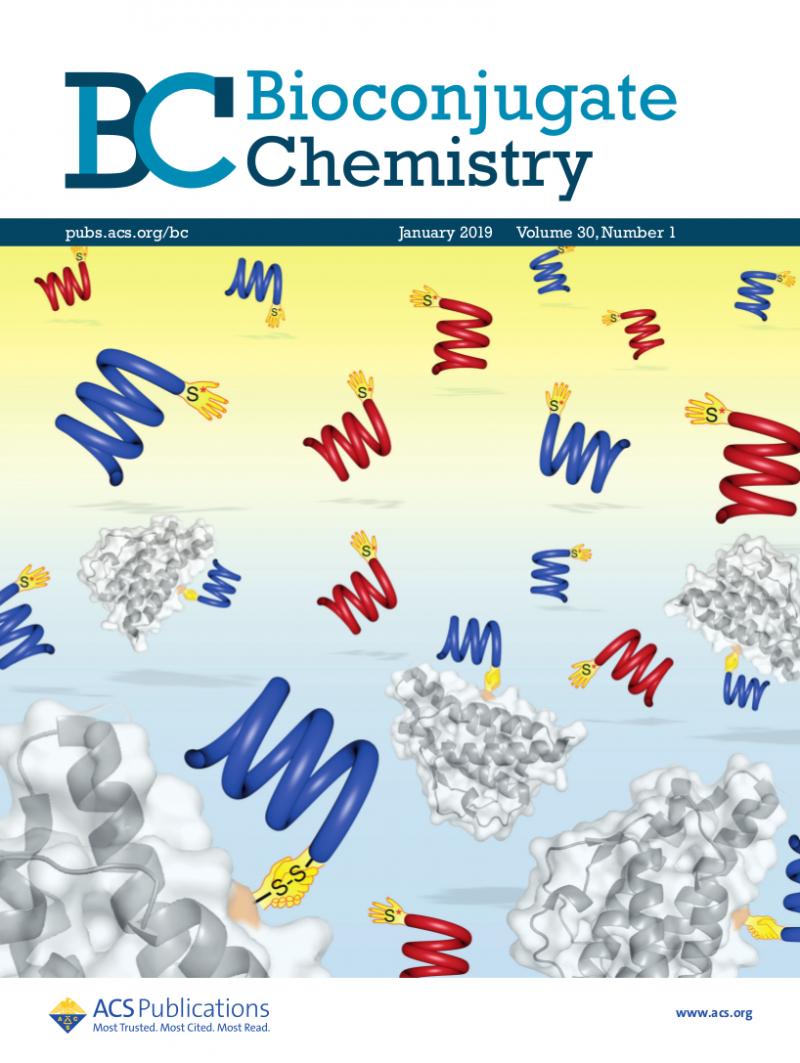
The paper focuses on the interactions between aromatic oligoamide foldamers and two therapeutically relevant proteins CypA and IL4. Several foldamers have been produced bearing a long or a short linker functionalized with an activated disulfide and tethered to cysteine residues introduced at the protein surfaces. The effective ligation was confirmed by CD, NMR and LC-MS techniques.
Cover picture: Nature Chemistry, 2018, 10, 405
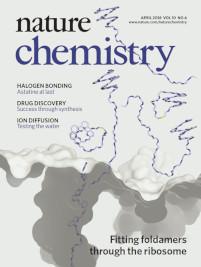
The paper focuses on the synthesis of several aromatic foldamers that have been succesfully translated by the ribosome.
New paper in Nature Chemistry accepted
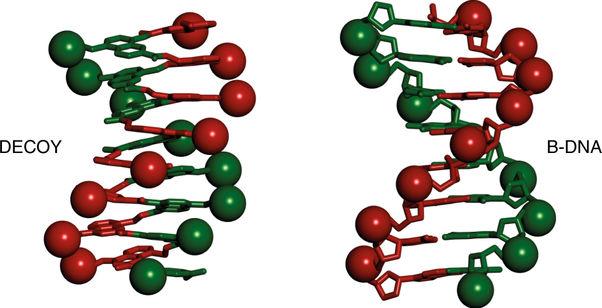
Check it out: HERE
Foldamer-based DNA mimics of an unprecedented kind have been developed
Single helical folded aromatic oligoamides of various lenght with phosphonate side chain functionalities have been designed and synthesized and structural analyses validated the resemblance between these foldamers and B-DNA.
The oligomers mimic the charge surface of double stranded B-DNA and show their potential at selective inhibiting several DNA-processing enzymes.
Inhibition was particularly strong for two therapeutically relevant enzymes, Topoisomerase 1 (Top 1) and Human immunodeficiency virus 1 integrase (HIV-IN), thus providing a paltform to conceive novel inhibitors of protein-DNA interactions for pharmaceutical and therapeurical applications.
New paper in Nature Chemistry accepted
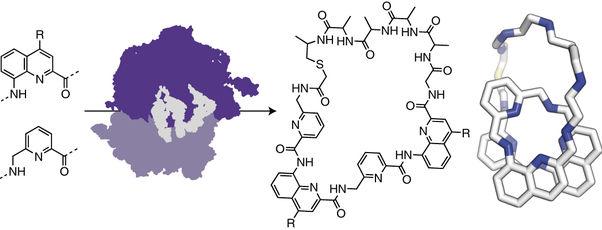
Check it out: HERE
Aromatic foldamers are the largest initiators building blocks to be accepted by the ribosome
The groups of Prof. Ivan Huc and Prof. Hiroaki Suga have successfully demonstrated that aromatic foldamer-appended peptides can be synthesized by the ribosome using genetic code reprogramming.
By applying the flexible in vitro translation (FIT) system, which involves the use of small aminoacylation ribozymes, i.e "flexizymes", several foldamer segments have been incorporated into polypeptides.
These results are important and of particular interest for the design and production of synthetic building blocks that can effectively bias the structure and folding of peptides and bind selectively biomolecules.
New paper in Nature Chemistry accepted
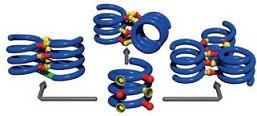
Check it out: HERE
Completely synthetic complex molecular objects
The group of Prof. Ivan Huc has successfully developed the first example of entirely synthetic molecules able to fold in dimeric and trimeric bundles by controlled assembly of the several helices. The arrangement is governed by hydrogen-bond-controlled iteractions at precise locations on the aromatic amide backbones which orient the position of the helices relative to each other.
This important step in the control of molecular shapes is a necessary prerequisite for the design of complex synthetic systems with functions as sophistaceted as natural proteins and oligonucleotides.
The group of Prof. Ivan Huc moved from the European Institute of Chemistry and Biology (Bordeaux, France) to the Ludwig-Maximilians-University (Munich, Germany)
From September 2017 the group of Prof. Ivan Huc is settled at the Department of Pharmacy of the Ludwig-Maximilians-University of Munich.
Good luck for this new adventure!
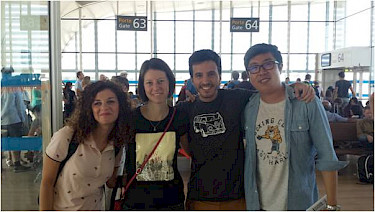
Inside front cover picture : Chem. Commun. 2017, 53, 9300
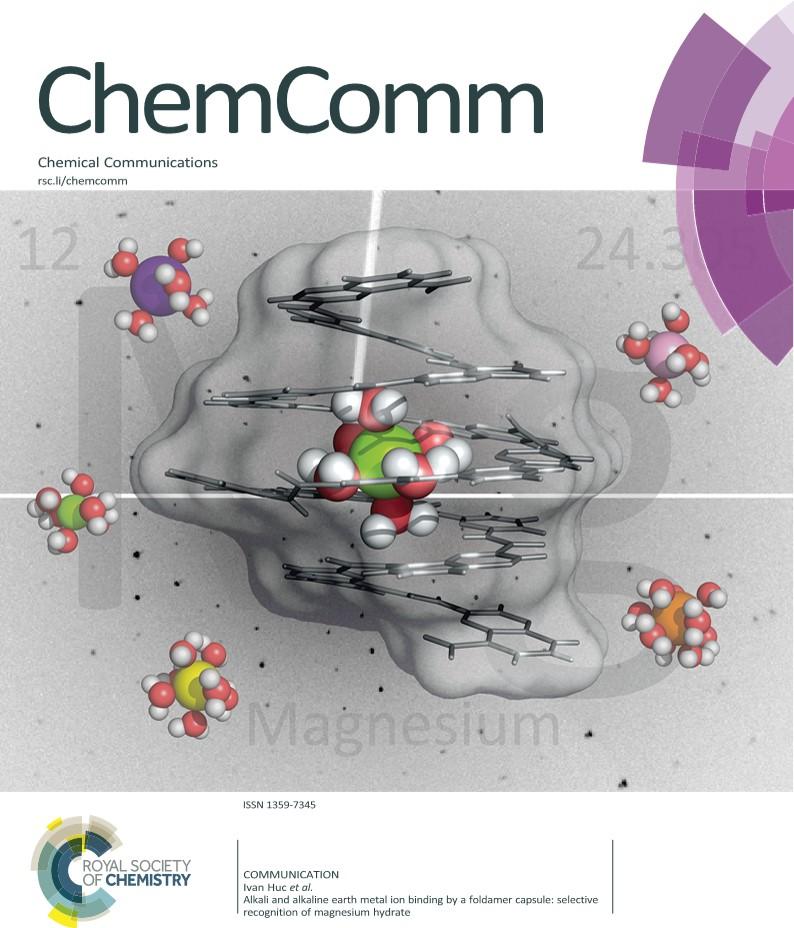
The paper focuses on the selective recognition between a foldamer capsule and some metal ions through the first or second coordination spheres of the metal hydrates.
Congratulation to Xiaobo!

Well done Xiaobo and best wishes in your future career !
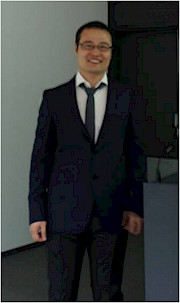
Congratulations to Bappaditya for his successful application for a Idex fellowship !

The principle is to use molecular recognition, or a light-triggered supramolecular event, to induce a change in charge transport properties of an oligo-aromatic foldamer similar to signal transduction in olfaction and vision in living systems, thus, acting as “artificial nose” and “artificial eye” respectively.
New complex nanometer-sized molecular structures
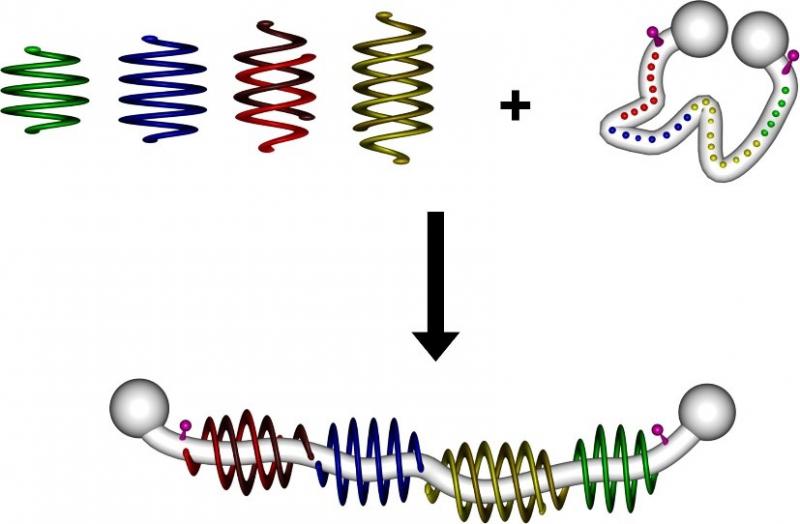
Researchers from our team have developed a method to construct large molecular structures through the self-assembly of helical sub-components around a molecular strand that serves as a template. This approach represents an important advance in the fabrication of nanometric objects with atomic precision. The results have been published on line on March 13 2017 in the journal Nature Nanotechnology (10.1038/nnano.2017.15).
The strategy followed in this work consists in controlling helices self-assembly along a molecular strand thanks to binding sites present on that latter. These binding sites are specific for each helix type depending on their length, their single or double nature as well as their helicity. Thus there is a transfer of a molecular information - the binding sites sequence - towards a well-defined final assembly.
The objects produced in this study do not possess any function per se, but they represent scaffolds onto which functional groups can be attached at precise positions in space across nanometric distances.
Translation of rod-like template sequences into homochiral assemblies of stacked helical oligomers
Quan Gan, Xiang Wang, Brice Kauffmann, Frédéric Rosu, Yann Ferrand, Ivan Huc
Congratulations to Saireddy for his successful application for a Marie Curie Fellowship !

Congratulations to our three laureates !
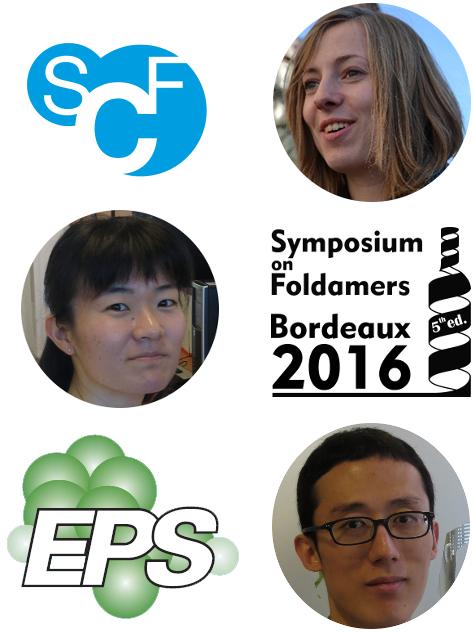
In the last two months, Maëlle Vallade won the annual PhD award from the Aquitaine branch of the French Chemical Society (voir ici), Ko Urushibara was awarded a best poster prize during the 2016 Foldamer Symposium in Bordeaux and Sunbum Kwon won a best oral communication Dr. Bert L. Schram award at the European Peptide Symposium in Leipzig, Germany. Well done !
Cover picture : ChemBioChem, 2016, 17, 1911
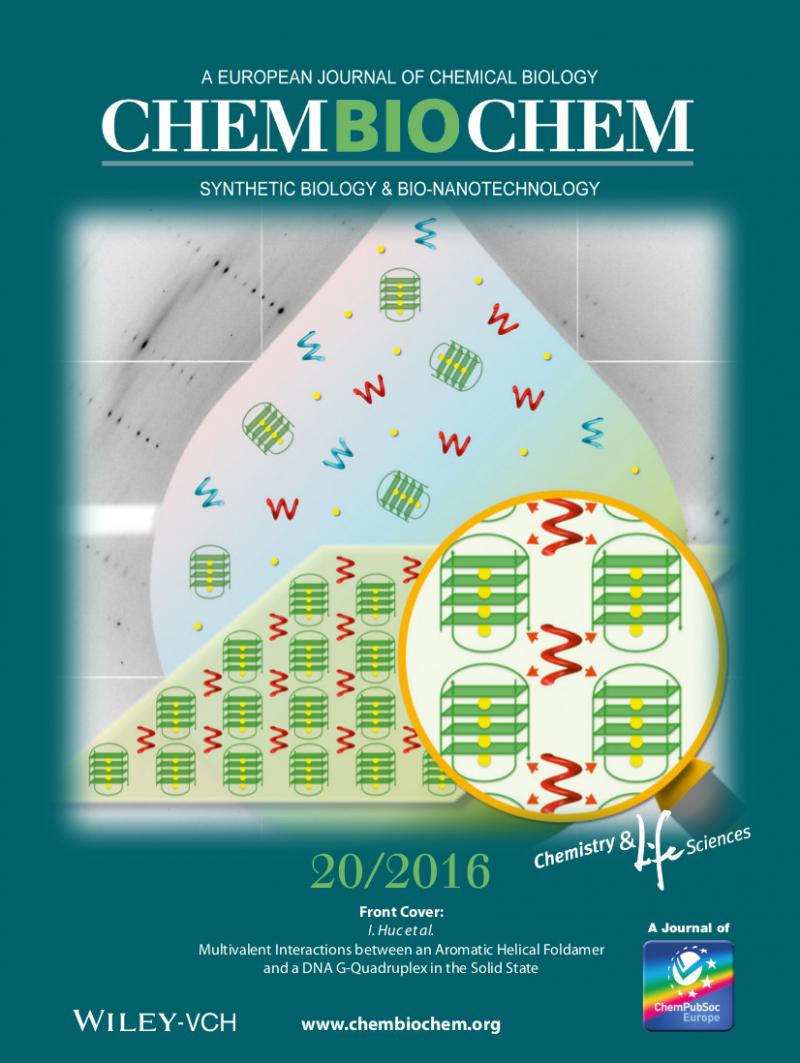
The paper focuses on the co-crystal structure of a G-quadruplex DNA and a helical oligoamide foldamer based on quinolines bearing cationic side-chains
Congratulations to Maëlle !
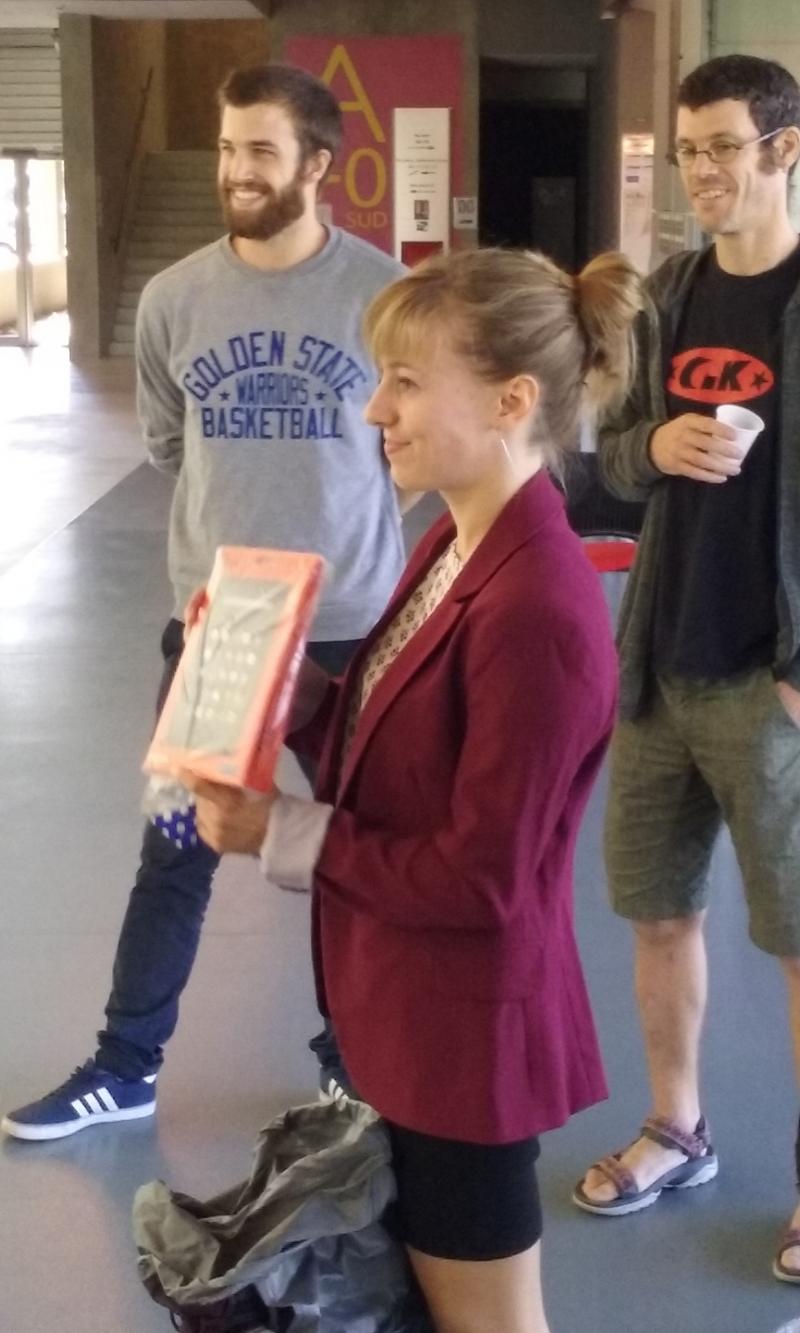
Well done Maëlle and best wishes in your future career !

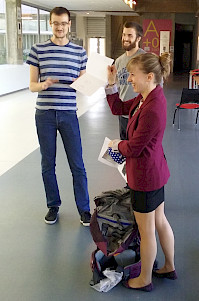
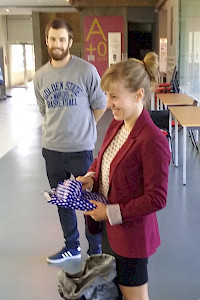
Cover picture: JACS, 2016, 138, 10314

The paper focuses on the structure-based evolution of an aromatic oligoamide foldamer sequence via mutations, additions, and deletions of monomers to produce a new receptor having high affinity and selectivity for malic acid, a guest that differs from tartaric acid by a single oxygen atom.
Symposium on Foldamers 2016
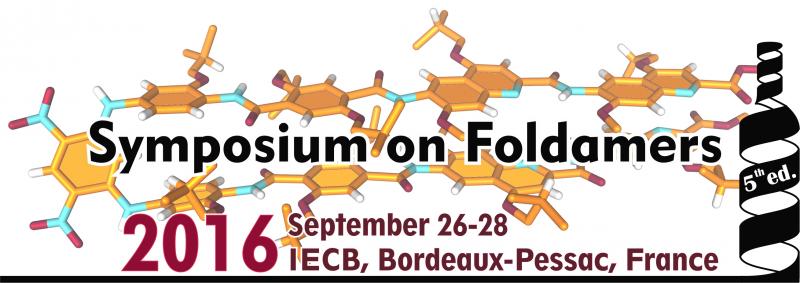
Please visit the symposium website: www.iecb.u-bordeaux.fr/foldamers2016/
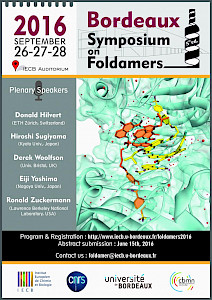
This symposium follows earlier editions that took place in Bordeaux in 2010, 2012, 2015and in Paris in 2013. As previously, the purpose will be to show that foldamers - artificial folded molecular architectures with functions - represent a multidisciplinary subject, ranging from synthetic oligomers to folded polymers and to protein and nucleic acid design. An outstanding lineup of speakers have agreed to contribute to the 2016 symposium:
Plenary Speakers
Prof. Donald Hilvert (E.TH. Zürich, Switzerland)
Prof. Hiroshi Sugiyama (Kyoto Univ., Japan)
Prof. Derek Woolfson (Univ. of Bristol, UK)
Prof. Eiji Yashima (Nagoya Univ. Japan)
Prof. Ronald Zuckermann (Lawrence Berkeley National Laboratory, USA)
Keynote Speakers
Prof. David Aitken (Univ. Paris Sud, France)
Prof. Muriel Amblard (Univ. Montpellier, France)
Prof. Kevin Burgess (Texas A&M Univ, USA)
Prof. Stephan Hecht (Humboldt-Univ. Berlin, Germany)
Prof. Brent Iverson (Univ. Texas Austin, USA)
Prof. Masanori Shigeno (Tohoku Univ., Japan)
Prof. Andrew Wilson (Univ. Leeds, UK)
Prof. Franck Würthner (Univ. Würzburg, Germany)
Prof. Huaqiang Zeng (Inst. Bioengineering and Nanotechnology, Singapore)
A limited number of slots for short lectures are available and will be attributed upon abstract submission.
Attendance won't exceed 120 participants and early registration is strongly recommended. Early hotel booking is also advised.
Registration fees
Regular participant: 250 €
Industrial participant: 500 €
Important deadlines:
Registration: June 15 or when the symposium is full
Abstract submission: May 15 or when the symposium is full.
We look forward to see many of you at this symposium.
Organizing committee : Christel Dolain; Céline Douat; Yann Ferrand; Gilles Guichard; Ivan Huc
Congratulation to Xiang for successfully defending his PhD thesis
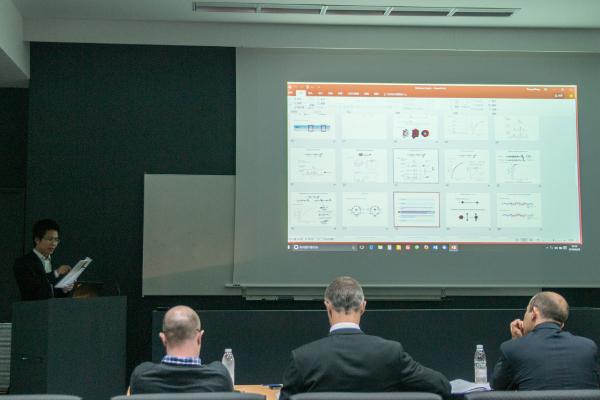
Well done Xiang and best wishes in your future career !
Back cover picture : ChemBioChem 2016, March
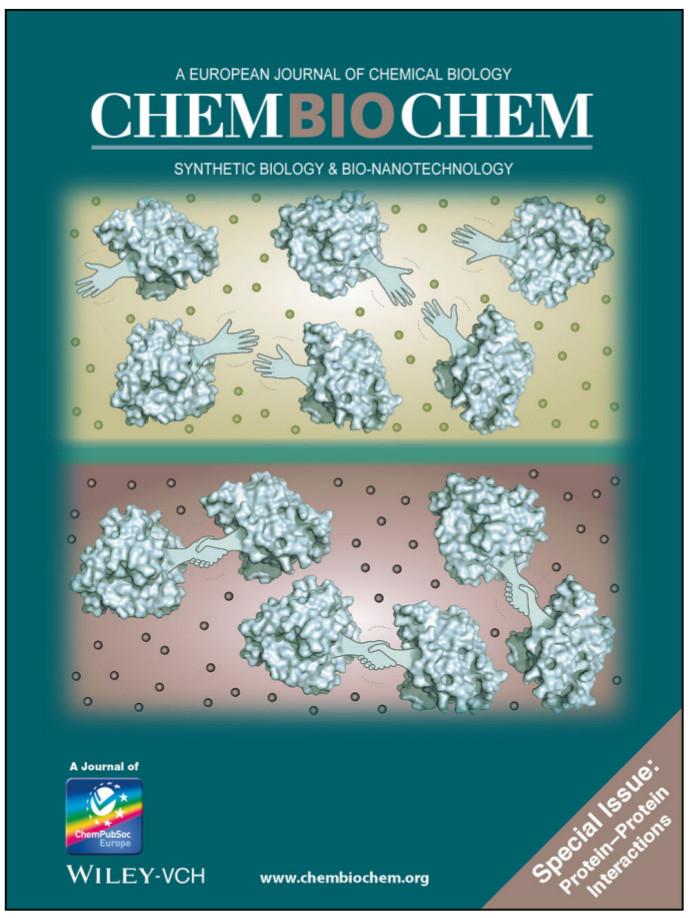
The paper deals with solution studies of protein-foldamers complexes, their buffer-dependent dimerization as well as their ability to induce helix handedness for the foldamers.
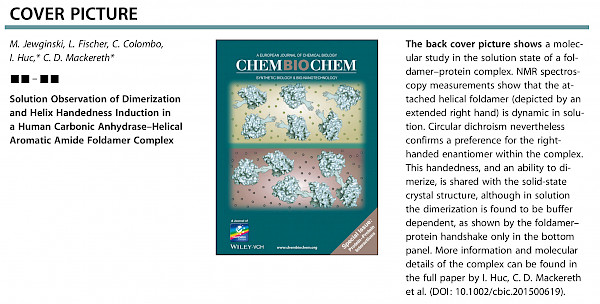
Congratulation to Pedro for his successful application for a Marie Curie Fellowship
Congratulation to Xuesong for successfully defending his PhD thesis
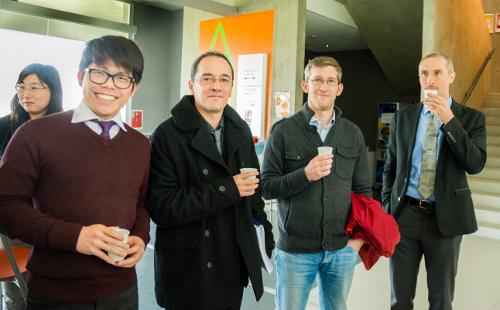
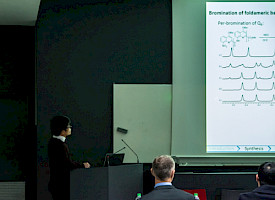
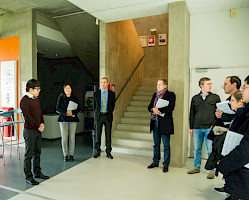
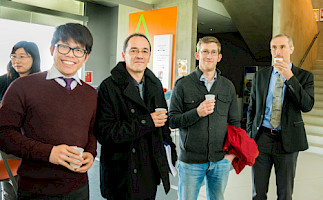
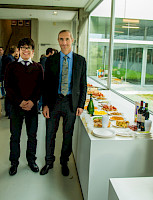
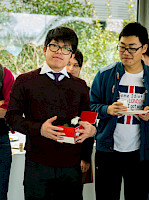
Ivan Huc rewarded for his research on foldamers as supramolecular objects

Ivan Huc has been rewarded by the French Academy of Sciences (Prix Victor Noury) for his research on foldamers as supramolecular objects. For this occasion a television news story has been filmed in the lab.
Watch the report :
*********************
See the page : clic
*********************
Highlight of a very big foldamer X-ray structure
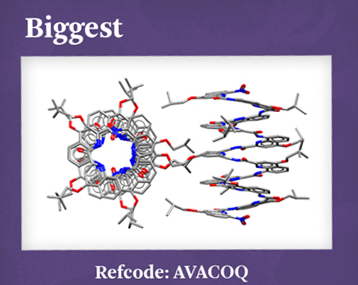
A crystallographic structure of an oligoamide aromatic foldamer published in JACS 2011 has been highlighted among others by the RSC as "a story of structure"
Aromatic amide foldamers, special guests of a movie on "origami"

"Un Monde en plis : le code origami".
Réalisateur : François-Xavier Vives
Une coproduction La Compagnie des taxi-brousse - Fact+film - Leonardo Film - ZDF/3sat, avec la participation de France 5
Everything that develops and changes in nature is folded: mountains, blossoms, the brain… Life is an unending series of folding and unfolding. It’s the most economical and efficient process in the natural world. And it is not only design. Folding determines also function.
Today researchers in robotics, medicine, biology, nanotechnologies, are embracing this “origami philosophy”. They are looking at how materials and molecules wrinkle, drape, flex and crease, refining origami techniques, and trying better to understand and duplicate nature’s universal folding principles.
The Origami Code explores this silent deciphering and mastering of a completely new dimension of reality. The film explores how the ancient art of folding paper has entered the cutting-edge domains of research and now could lead the way to the ultimate stage in bionics.
Source : http://www.overvelde.com/2015/05/31/the-origami-code/
Congratulations to Yann
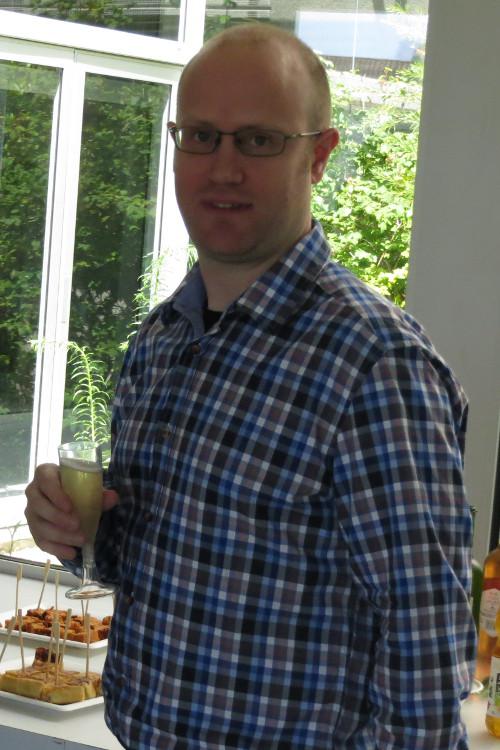
Well done Yann and best wishes for your carrier !
There will be more and more lucky PhD students supervized by you...
New paper in Nature Chemistry accepted
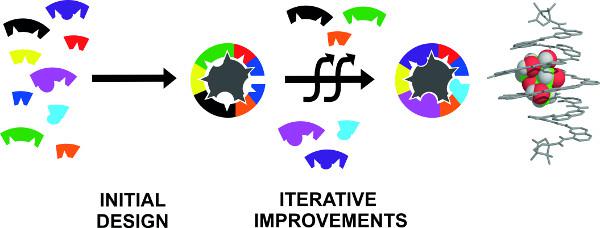
Check it out : HERE
A breakthrough in the design of synthetic sugar receptors
Research results reported by these groups on synthesizing a foldamer able to selectively encapsulate fructose have indeed just been published today. This result is the first of its kind!

Sugars such as glucose, fructose, mannose or galactose exist in different forms and are particularly difficult to discriminate. The high selectivity of a specific foldamer towards fructose thus seems to be a promising solution regarding such an issue.
Designed from modular artificial strands and able to fold into well-defined conformations, foldamers may form cavities complementary to small molecules such as monosaccharides. The highly predictable structure of these artificial molecules is a clear advantage in creating new receptors.
In collaboration with Cameron Mackereth from the IECB and Didier Dubreuil from the University of Nantes, Ivan Huc, a foldamer specialist at the Institute, and his team have successfully developed an efficient synthetic route to tailor these new molecules:
A first-generation foldamer was first produced from first principles by simply considering the size and properties of the cavity formed by the helically folded oligomer. Next, through the elucidation of the interactions between this foldamer and fructose, our researchers adopted a structure-based iterative approach to progressively modify the sequence of the strands so as to end-up with the desired cavity. In only a few iterations they obtained a new host-guest complex with unprecedented selectivity.
Beyond fructose, this novel and original approach could pave the way to a general strategy aiming at discriminating resembling sugars and also other important molecules.
As a continuation of this work, one may envisage that such host-guest molecules could lead to a new family of molecular probes to discriminate and titrate sugars in biological media.
A new generation of selective receptors to monitor closely
Congratulations to Christos !
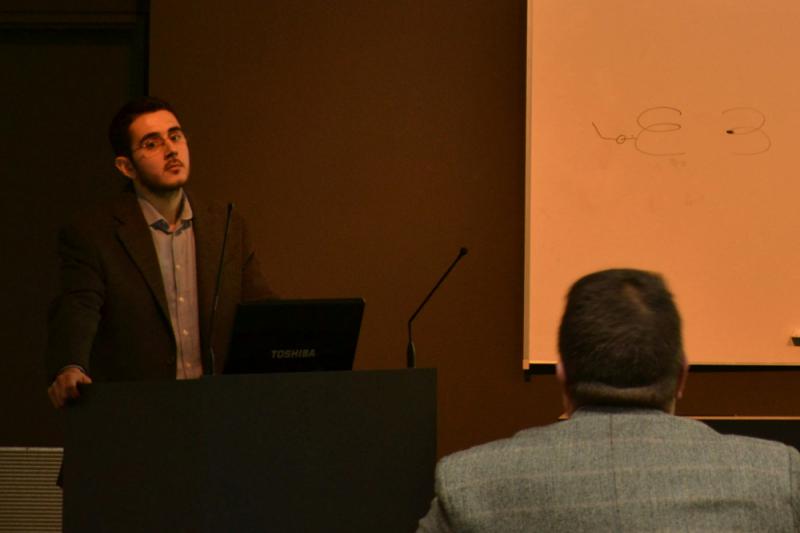
Well done Christos and best wishes in your future career !Well done Christos and best wishes in your future career !
Bordeaux 2015 Symposium on Foldamers
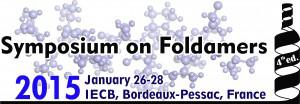
Hosted by IECB, this Symposium on Foldamers will show as a prime objective the multidisciplinary aspects of the field.
Invited speakers :
Plenary sessions :
- Prof. Kurt Vesterager Gothelf (Aarhus University, Denmark)
- Prof. Bert Meijer (Technical Univ. Eindhoven, The Netherlands)
- Prof. Vincent Pecoraro (Univ. Michigan, USA)
- Prof. Fraser Stoddart (Northwestern Univ., USA)
- Prof. Todd Yeates (UCLA, USA)
Keynote sessions :
- Prof. Luc Brunsveld (Technical Univ. Eindhoven, The Netherlands)
- Dr. Jeanne Crassous (Univ. Rennes, France)
- Prof Amar H Flood (Indiana University, USA)
- Prof. Fernando Formaggio (Univ. Padova, Italy)
- Ass. Prof. Seth Horne (Univ. Pittsburgh, USA)
- Prof. Kyu-Sung Jeong (Yonsei University, Korea)
- Prof. Ronald Micura (Univ. Innsbruck, Austria)
- Ass. Prof. Bradley Pentelute (Massachusetts Institute of Technology, USA)
- Prof. Alan Rowan (Univ. Nijmegen, The Netherlands)
- Prof. Michinori Suginome (Kyoto University, Japan)
- Prof. Dan Yang (Honk-Kong University)
Registration : HERE
Cover picture : EJOC 2014, 4265
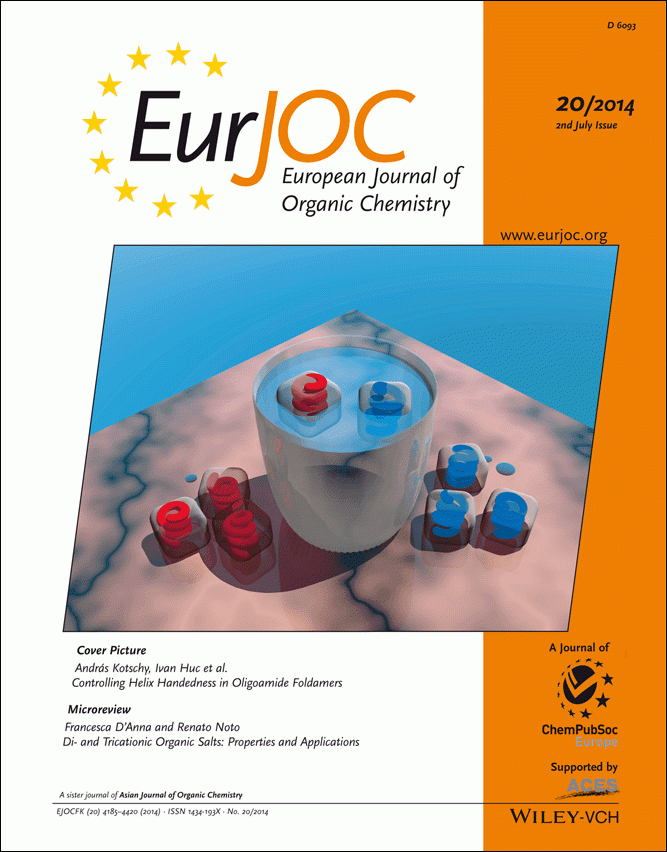
The paper focuses on controlling the helix handedness of water-soluable foldamers by installing chiral end groups at either the C or N terminus.
Highlight of J. Atcher's paper: "Very Important Publication" in Angewandte Chemie has been highlighted in ChemViews Magazine"
Angew. Chem. Int. Ed. 2021, 60, 2574
Conformational Changes in Foldamers :: ChemViews Magazine :: ChemistryViews
Cover picture: Angewandte Chemie, 2021, 60, 18461 –18466

Link to the article:
Angew. Chem. Int. Ed. 2021, 60, 18461 –18466
A new Nature Chemistry publication in collaboration with the group of Prof. Sijbren Otto at the University of Groningen is online

Link to the article:
Nature Chemistry 2020, 12, 1180
Link to highlights:


